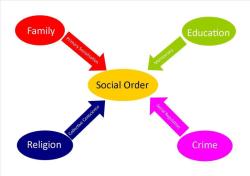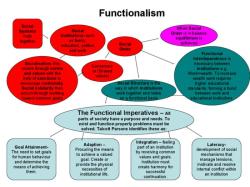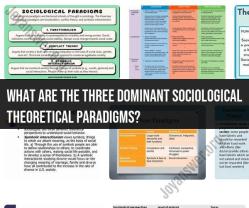What are micro and macro elements with examples?
Micro, mezzo, and macro are terms often used to differentiate between different levels of analysis or intervention in various fields, including sociology, social work, and environmental science. These terms help categorize elements based on their scope and scale. Let's explore the concepts of micro, mezzo, and macro with examples:
Micro:
- Definition: Micro refers to the smallest scale of analysis or intervention, focusing on individual-level elements and interactions.
- Examples:
- Microeconomics: Examines the behavior of individual consumers and firms, focusing on factors like supply, demand, and pricing for specific goods or services.
- Microbiology: Studies microorganisms such as bacteria, viruses, and fungi at the microscopic level.
- Micro-level Sociology: Analyzes individual interactions, behaviors, and small-group dynamics within a society.
- Individual Therapy: In psychology or counseling, micro-level interventions involve working with individuals to address personal issues.
Mezzo:
- Definition: Mezzo represents an intermediate or middle level of analysis or intervention, focusing on small to medium-sized groups or communities.
- Examples:
- Mezzo-level Social Work: Involves working with families, small groups, or communities to address issues like family dynamics, group conflict, or community development.
- Mezzo-level Sociology: Analyzes organizations, institutions, and communities, studying social dynamics at a more intermediate level.
- Group Therapy: Interventions that work with small to medium-sized groups to address shared concerns and dynamics.
- Community Health Programs: Initiatives that target specific neighborhoods or communities to improve overall health and well-being.
Macro:
- Definition: Macro pertains to the largest scale of analysis or intervention, focusing on societal-level structures, systems, and patterns.
- Examples:
- Macroeconomics: Examines the overall economic performance of a nation, including indicators like GDP, unemployment rates, and inflation.
- Macrosociology: Studies large-scale social structures, institutions, and societal patterns, exploring topics like inequality, globalization, and social movements.
- Public Policy: Involves creating and implementing policies at the governmental level to address broad societal issues.
- Global Environmental Issues: Addressing large-scale environmental challenges, such as climate change, deforestation, and pollution, on a global scale.
In summary, micro, mezzo, and macro elements provide a framework for understanding the different levels of analysis or intervention within various disciplines. Micro focuses on individual-level elements, mezzo on small to medium-sized groups or communities, and macro on large-scale societal structures and systems. These concepts help professionals and researchers tailor their approaches to the appropriate scale for addressing specific issues or phenomena.
Can you differentiate between micro and macro elements, providing examples to illustrate each?
Micro vs. Macro Elements
Micro and macro elements are both essential for the growth and development of plants, but differ in the amounts required:
Macro elements:
- Required in larger quantities (0.5% or more of plant dry weight)
- Play key roles in plant structure, metabolism, and energy production
- Examples:
- Nitrogen (N): Essential for protein and chlorophyll formation. Deficiency causes stunted growth, yellowing leaves.
- Phosphorus (P): Important for energy transfer, root development, and flower formation. Deficiency leads to weak stems, poor flowering.
- Potassium (K): Involved in enzyme activation, water regulation, and disease resistance. Deficiency results in wilting, poor fruit quality.
- Calcium (Ca): Crucial for cell wall formation, membrane function, and nutrient uptake. Deficiency causes leaf curling, blossom end rot.
- Magnesium (Mg): Part of chlorophyll molecule, essential for photosynthesis. Deficiency shows as interveinal chlorosis (yellowing between leaf veins).
- Sulfur (S): Component of protein, vitamins, and enzymes. Deficiency results in stunted growth, pale leaves.
Micro elements:
- Required in smaller quantities (less than 0.5% of plant dry weight)
- Act as catalysts in various metabolic processes
- Examples:
- Iron (Fe): Crucial for chlorophyll synthesis and respiration. Deficiency causes iron chlorosis (yellowing of leaves).
- Manganese (Mn): Involved in photosynthesis, nitrogen metabolism, and disease resistance. Deficiency leads to interveinal chlorosis, stunted growth.
- Zinc (Zn): Important for protein synthesis, hormone activity, and seed development. Deficiency causes stunted growth, chlorosis, and poor seed quality.
- Boron (B): Essential for cell wall formation, pollen germination, and sugar transport. Deficiency results in weak stems, distorted leaves, and poor fruit set.
- Copper (Cu): Plays a role in photosynthesis, respiration, and enzyme activity. Deficiency causes leaf curl, blanching of new leaves.
- Molybdenum (Mo): Important for nitrogen fixation and enzyme function. Deficiency leads to nitrogen deficiency symptoms.
- Chlorine (Cl): Involved in photosynthesis, osmotic balance, and disease resistance. Deficiency causes stunted growth, wilting, and bronzing of leaves.
Key differences:
- Quantity required: Macro elements are needed in much larger quantities than micro elements.
- Function: Macro elements play critical roles in plant structure, metabolism, and energy production, while micro elements act as catalysts in various metabolic processes.
- Deficiency symptoms: Deficiencies in both macro and micro elements can cause various growth abnormalities, but the specific symptoms will differ depending on the element.
Remember:
- Both macro and micro elements are essential for plant health.
- Maintaining a balanced supply of all necessary elements is important for optimal growth and development.
- Soil testing can help determine if there are deficiencies in macro or micro elements.
- Fertilizers can be used to supplement the soil with needed elements.













